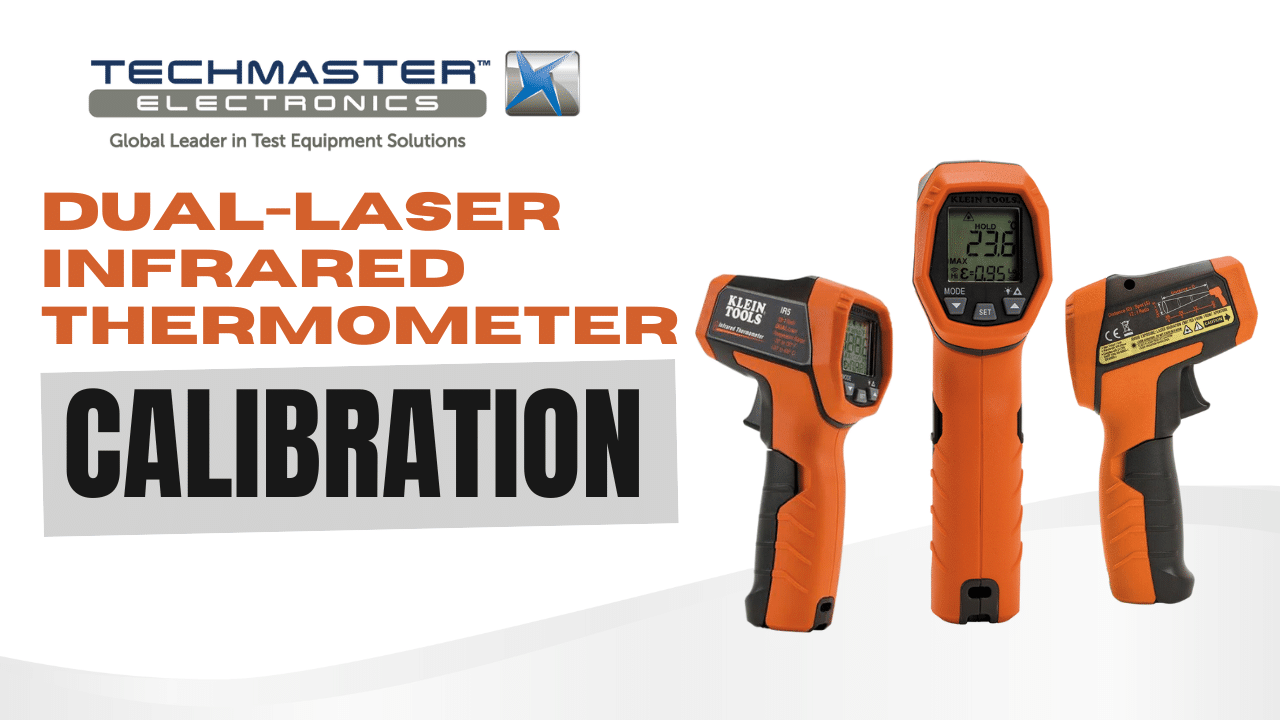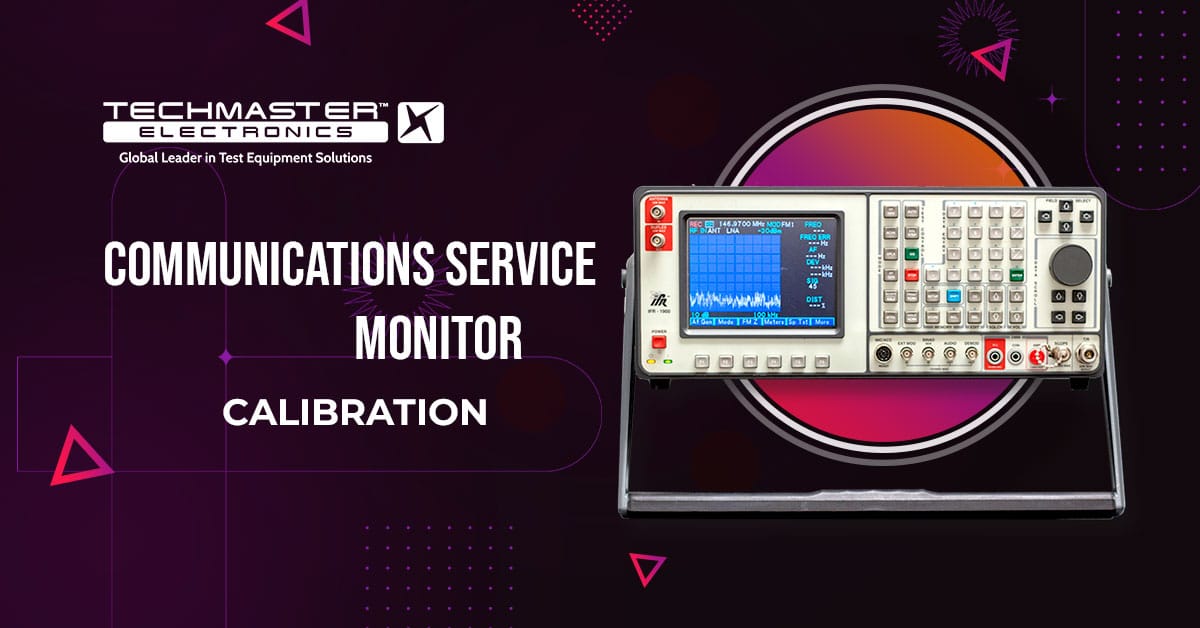Imagine this: You’re preparing for a critical 5G test. Everything’s ready—except your spectrum analyzer starts reporting suspicious values. A minor calibration drift becomes a major setback: failed tests, missed deadlines, potential fines. That’s not just frustrating—it’s avoidable. Spectrum analyzer calibration ensures your measurements are accurate, your devices compliant, and your systems performing at peak reliability. This guide covers why it’s essential, how it’s done, and how often it should be part of your maintenance schedule.
What Is a Spectrum Analyzer—And Why It Needs Calibration
Spectrum analyzers detect and display the frequency and amplitude of RF (radio frequency) signals. Engineers use them to identify harmonics, spurious emissions, intermodulation distortion, and phase noise—all critical aspects in RF diagnostics, compliance testing, and product development.

Types of Spectrum Analyzers:
-
Benchtop Analyzers: High-end models like Keysight PXA or Rohde & Schwarz FSW used in labs
-
Portable Analyzers: Lightweight, rugged models (e.g., Anritsu MS2720T) for field testing
-
Real-time Spectrum Analyzers: Designed for fast-changing signals in applications like radar and 5G
Applications Across Industries:
-
Telecommunications: Validating 5G base stations, checking spectral masks
-
Aerospace & Defense: Monitoring radar signals, telemetry accuracy
-
Electronics Manufacturing: Ensuring EMI/EMC compliance before market launch
-
Medical Devices: Validating RF performance in diagnostic and therapeutic equipment
-
Academic & R&D Labs: Analyzing wireless communication prototypes
Regardless of use case, these devices must be calibrated regularly to ensure that measurements remain accurate over time.
Why Skipping Calibration Is a Business Risk
Like all measurement equipment, spectrum analyzers can drift over time due to mechanical wear, environmental conditions, or component aging. When accuracy degrades, so does your confidence in test data.
Consequences of Using Uncalibrated Equipment:
-
Compliance failures: Nonconforming devices risk failing FCC, AS9100, or ISO 9001 inspections
-
False pass/fail results: Leading to product recalls, redesigns, or shipment delays
-
Increased rework: Wasted engineering hours chasing nonexistent problems
-
System reliability issues: Especially in defense, telecom, and medical sectors
Benefits of Routine Calibration:
-
Restores measurement integrity for frequency, amplitude, phase noise, and RBW
-
Ensures test repeatability across different systems or labs
-
Enables faster root-cause analysis in troubleshooting
-
Helps maintain traceability to national and international standards
When overlooked, calibration becomes a silent liability—until it’s too late.
The Calibration Process: What Happens Behind the Scenes
Calibrating a spectrum analyzer involves more than connecting it to a signal generator and pressing a few buttons. Professional calibration labs follow structured procedures using high-accuracy, traceable reference equipment.
General Calibration Workflow:
-
Pre-check: Inspect functionality, firmware version, hardware condition
-
Baseline testing: Measure key performance parameters—frequency response, amplitude linearity, RBW accuracy, and phase noise
-
Adjustment: If any parameters fall outside specification, precision tuning is done
-
Documentation: A calibration certificate is issued, including test results, uncertainties, and traceability info
Reference standards often used include:
-
Fluke 5700 Series: For voltage and frequency references
-
Agilent 3458A: For high-resolution signal verification
-
Power sensors and signal generators for dynamic range checks
Techmaster offers flexible calibration service models to meet various operational needs:
-
On-site calibration at your facility to reduce equipment downtime
-
In-lab calibration under controlled environmental conditions
-
Emergency service with rapid turnaround for urgent projects
An effective calibration program also includes secure digital access to historical certificates and scheduling tools. The Techmaster Portal provides 24/7 access to calibration records, allows certificate downloads, and sends automated reminders to help users maintain compliance and audit readiness with ease.

Standards That Shape RF Calibration
Spectrum analyzer calibration must align with globally recognized standards to be accepted during audits or certifications.
Core Standards:
-
ISO/IEC 17025: The most widely accepted accreditation for calibration labs
-
ANSI/NCSL Z540.1: Often required in aerospace and military contracts
-
NIST Traceability: Ensures all measurements connect back to national metrology institutions
Why Standards Matter:
-
They provide repeatability and trust in your measurement data
-
They’re often required by customers or regulators for contract approval
-
They minimize international friction when selling or deploying products across borders
For organizations in regulated industries, proper documentation of calibration (and the use of accredited providers) isn’t optional—it’s expected.
In-House vs. Outsourced Calibration: Weighing Your Options
Some companies consider in-house calibration as a way to reduce costs. While feasible for high-volume operations with skilled metrology teams, it introduces several trade-offs.
Comparison Table:
| Criteria | In-House Calibration | Professional Calibration Lab |
|---|---|---|
| Initial Investment | High (equipment + training) | Included in service fee |
| Equipment Accuracy | Depends on internal tools | Uses certified, traceable standards |
| Regulatory Risk | Higher | ISO/IEC 17025 accredited |
| Turnaround Time | Variable | Typically 3–5 business days |
| Troubleshooting Help | Limited | Includes expert support and repair |
In-house calibration can be a valuable long-term strategy—if you have the infrastructure and personnel. For most organizations, partnering with a specialized lab provides faster, more reliable results with less overhead.
Calibration Frequency: How Often Is Enough?
The ideal calibration interval depends on a few key factors:
-
Manufacturer guidance: Usually 12 months
-
Operating environment: Harsh conditions reduce stability
-
Usage intensity: Daily use demands more frequent checks
-
Compliance needs: Some sectors require semi-annual or quarterly calibration
Common Intervals:
-
Telecommunications: Every 6–12 months
-
Aerospace and Defense: Every 12 months or less
-
Manufacturing and R&D: Annually or based on internal quality policy
If unsure, start with a 12-month interval and adjust based on drift history or audit feedback. Keeping a digital log of calibration results can help tailor an optimized schedule.
Going Deeper: What Else Calibration Reveals
Beyond obvious parameters like frequency and amplitude, a thorough calibration also validates:
-
Noise floor accuracy: Critical for detecting weak signals in crowded spectrums
-
Harmonic distortion: Identifies system nonlinearities
-
Spurious response: Helps verify clean signal paths
-
Marker accuracy & span resolution: Ensures signals appear where expected
For high-stakes applications like 5G signal decoding, satellite communications, or EMI compliance testing, these subtleties make the difference between pass and fail.
If your setup includes signal generators, power meters, or vector network analyzers (VNAs), calibrating them together ensures consistent performance across the test system. Many labs offer bundled calibration plans tailored to RF workbenches.
Scenario: A Missed Calibration That Nearly Cost Millions
A product development team at a consumer electronics firm was running final EMI/EMC validation on a Bluetooth-enabled device. The spectrum analyzer they relied on hadn’t been calibrated in over two years.
Initial results showed compliance—but when retested at a third-party cert lab, the device failed due to spurious emissions. The analyzer had drifted just enough to miss these signals, leading to:
-
Weeks of delay
-
Emergency board redesign
-
Regulatory documentation updates
-
Customer launch delays and strained supplier relationships
All avoidable with a proper calibration schedule.

Frequently Asked Questions (FAQ)
Q: How long does calibration take?
A: Typically 3–5 business days; expedited services are available for urgent needs.
Q: Is on-site calibration reliable?
A: Yes, if performed by qualified technicians with mobile standards. Ideal for minimizing equipment downtime.
Q: What’s in a calibration certificate?
A: Test data, uncertainty values, traceability info, environmental conditions, and lab accreditation details.
Q: How do I know when calibration is due?
A: Check the certificate’s expiry date or set automated reminders using equipment management software.
Q: What if my analyzer fails calibration?
A: It can often be adjusted on the spot. If not, professional labs may offer repair services or rental equipment.
Final Thoughts: Calibration Is Not Just Compliance—It’s Confidence
Your spectrum analyzer is the gatekeeper of RF truth. Without accurate, traceable measurements, every decision that follows is built on shaky ground. Whether you’re validating a wireless device, troubleshooting interference, or preparing for regulatory approval, calibration turns uncertainty into measurable reliability.
Investing in a structured, standards-based calibration program reduces business risk, improves product quality, and builds a stronger foundation for innovation.
Need expert insight or help creating your spectrum analyzer calibration plan?
Contact a certified calibration provider and start building confidence into your measurements today.











